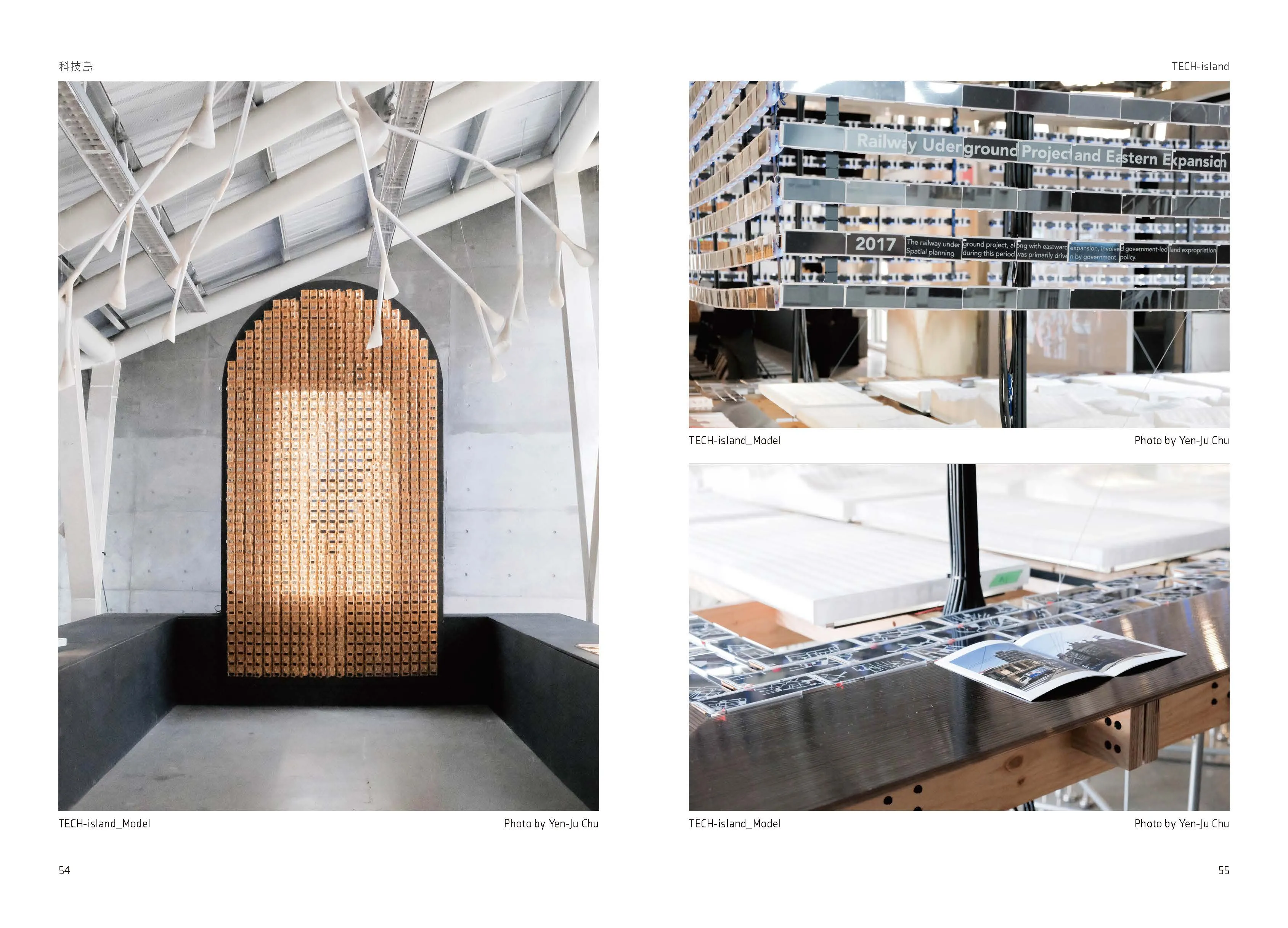TECH-island
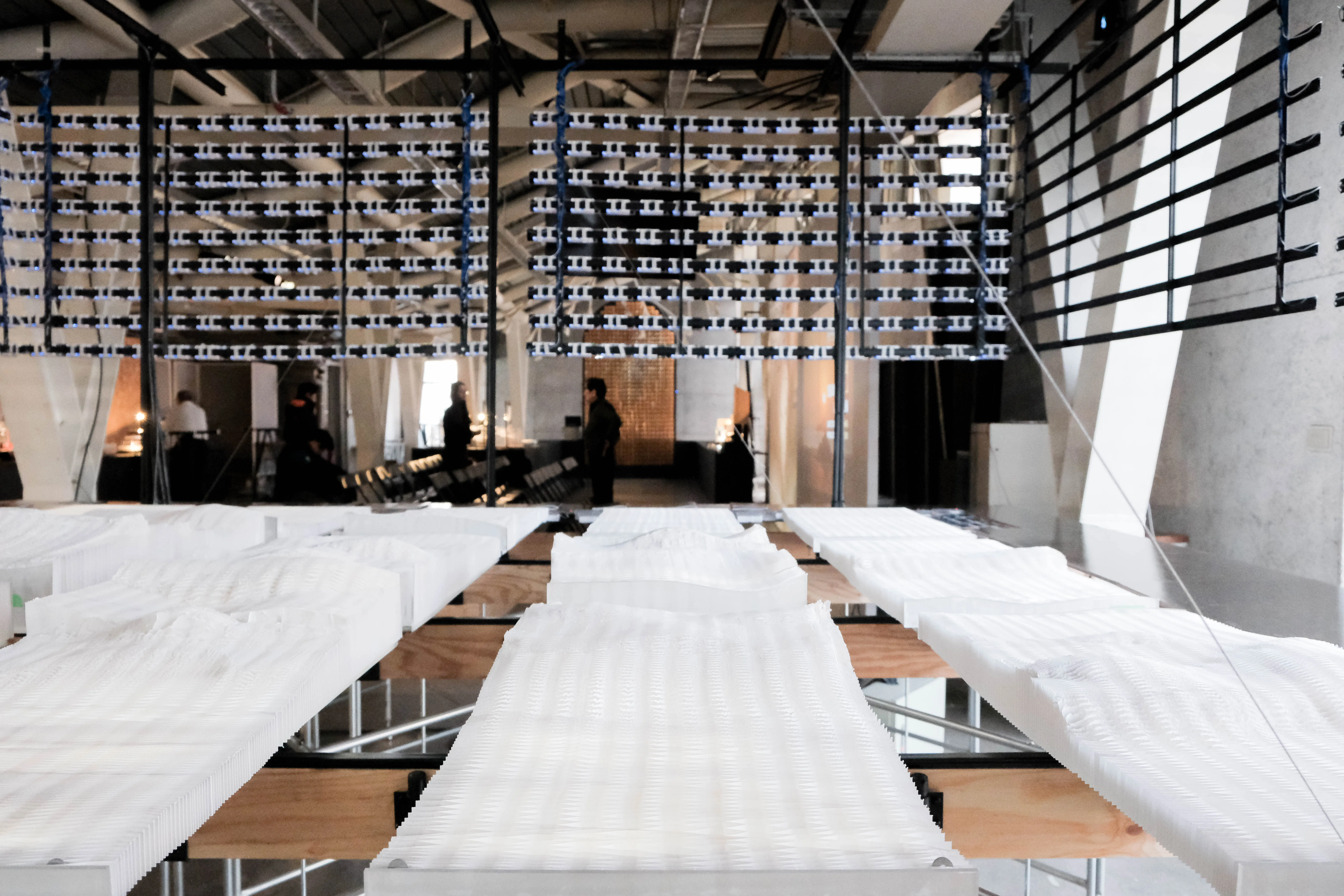
Exhibition Team
H2O Studio
Team Member
Yen-Chang HUANG,
Yi-Jou LIN,
Wei-Shun WANG,
Cheng-Yun TSAI,
Yu-Chun YEH,
Hsing-Chih CHIEN,
Yi-Syuan FANG,
Keng-Pu KUO,
Yi-Hsuan CHEN,
Yen-Hsiu CHANG
View the Printed Edition (PDF)
NON-Belief
Do you believe? The belief built upon fictional realities has enabled human societies to organize and collaborate throughout historical evolution. Under Taiwan’s rapid technological and urban development,TSMC, high speed, and the pursuit of efficiency have become contemporary “beliefs”, driving and transforming the world’s operations. Focusing on a geopolitically precarious future, these beliefs are upheld by Taiwan’s collective dedication. As we deeply reflect on the environmental, water resources, and energy costs embedded within these beliefs, Taiwan offers embodied intelligens in its architecture, examining and understanding how life adapts and transforms to establish a resilient and self-sustaining island republic in our collectively uncertain and fragile future.
The concept of “precarity” extends beyond unstable labor or economic volatility. Recent studies on future precarity explore how individuals cope with unstable conditions intertwined with the broader temporalities imposed by modernity. In contrast to the optimistic progress and idealistic visions of utopia in the modern era, the “future” in today’s globalized world is an uncertain, precarious, and contested space, where conflicting values coexist amid instability and even tension.
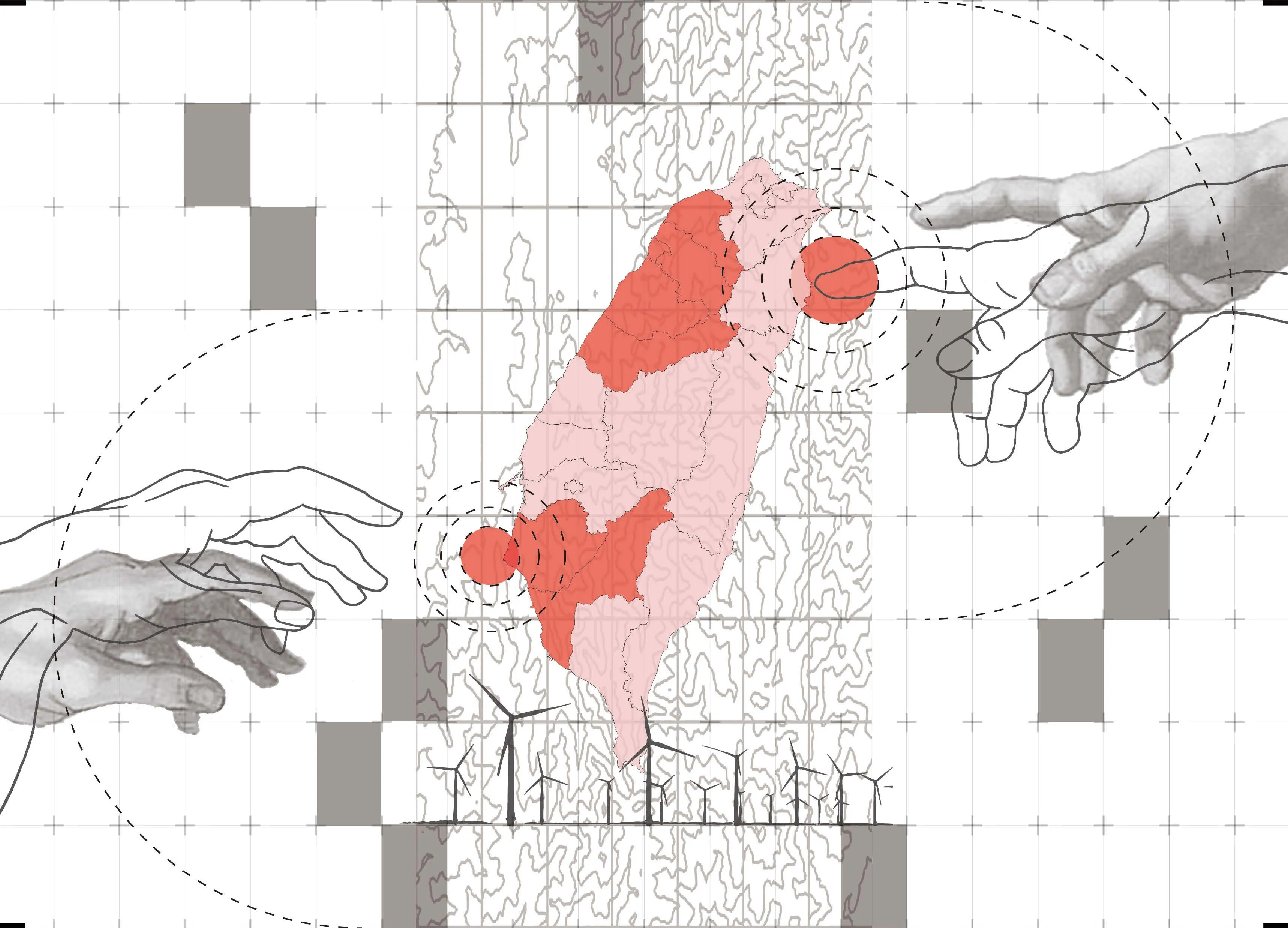
Taiwan Intelligens of Precarity
aiwan can be seen as a large house, with the island as its structure, cities as islands, and urban spaces as rooms. Positioned within a globally unstable context, Taiwan faces challenges like climate change, systemic inequities, and geopolitical tensions. Through multi-scalar architectural exploration, Taiwan’s built environment serves as an experimental ground for addressing crises.
The “aiwan Intelligens of Precarity” reflects strategies for resilience and adaptation, offering insights into displaced societies. Urban spaces become interconnected contact zones, shaped by colonial legacies and global connections. The high-speed rail links the western corridor as both a tool of governance and a compressed “landscape of belief,” contrasting with studies like “Tainan Blockology,” which reveal Taiwan’s identity through its intricate urban fabric. This architectural intelligence highlights Taiwan’s capacity to navigate precarity, offering innovative solutions for a dynamic and unstable world.
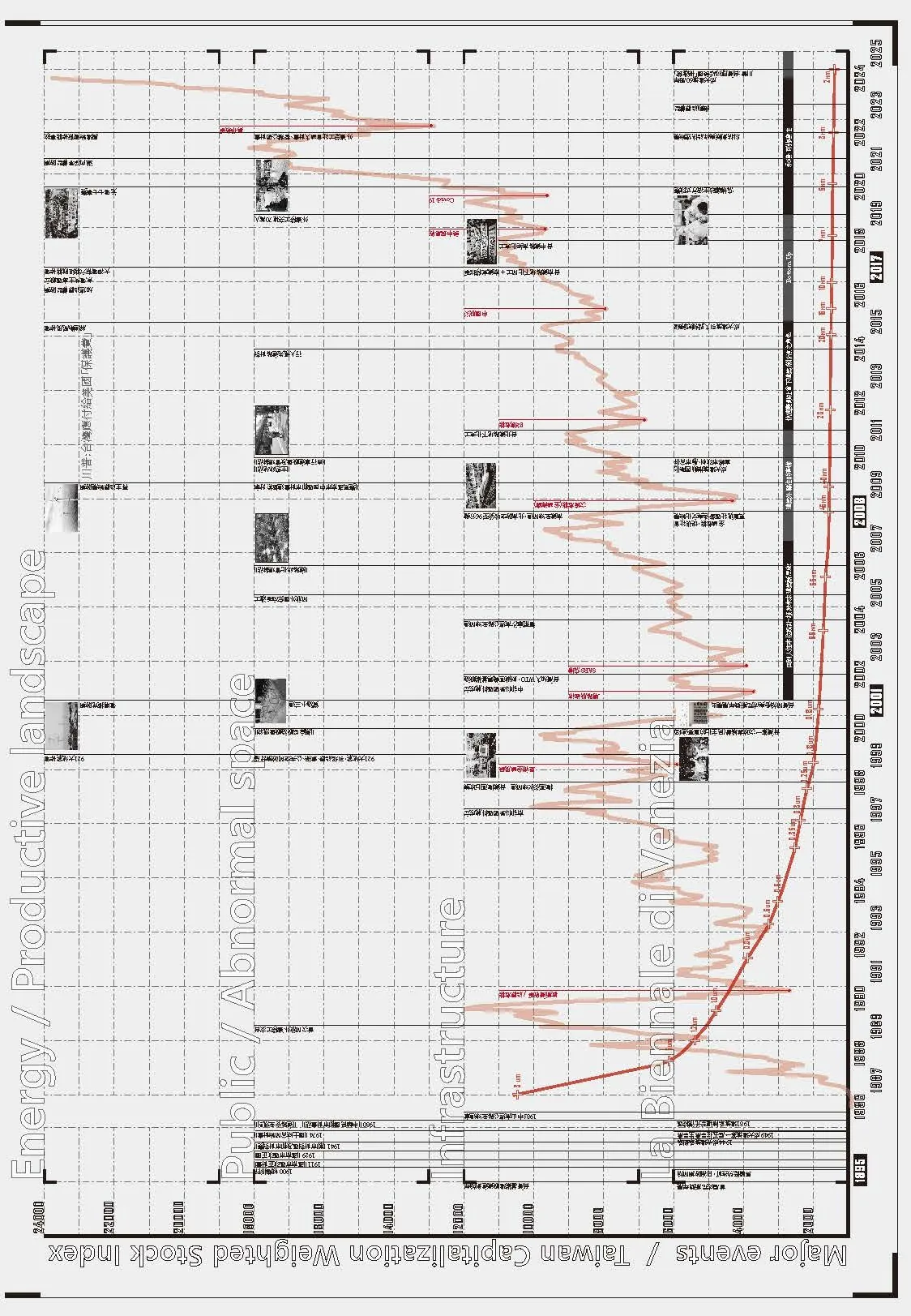
Contemporary Belief and Intelligence
Carlo Ratti’s theme Intelligens, proposed at this year’s Architecture Biennale, highlights both the potential and failures of intelligence,inviting reflection on its blurred boundaries between “good” and “bad.” It challenges us to see intelligence not as a static virtue but as a dynamic interplay of successes and contradictions.
As Yuval Noah Harari notes in Sapiens, humanity’s belief in “fictional realities” like nations,corporations, religions, and laws enables largescale collaboration and collective intelligence.These shared beliefs allow humans to organize adaptively, reflecting intelligence’s dual nature: unifying or dividing, inspiring progress.
However, intelligence is not simply good or bad but exists in dynamic tension. NON-Belief explores a uniquely Taiwanese wisdom: a gray zone between belief and non-belief. This model challenges binary oppositions and reflects Taiwan’s resilience and innovation at the intersection of globalization and localization, forming a distinctive intelligence.
The exhibition seeks to explore the relationship between contemporary architecture, technology development, and environmental sustainability,showcasing modern design thinking that reflects on the intersections of environment, society,and humanity. Led by the National Cheng Kung University, this effort brings together renowned architects, designers, and research teams from Taiwan. Under the theme of NON-Belief, the pavilion constructs a “gray zone” within the binary dialectic of “belief” and “non-belief” in Taiwanese society and everyday life, offering reflections and presenting Taiwan’s unique intelligens.
The exploration will focus on three aspects:
Efficiency: NON-Belief in High-Speed explores the global trend of pursuing efficiency and rapid development. Using Taiwan High Speed Rail as the case study, the exhibition proposes a reflection on the urban ecology within the metropolitan areas constructed by the high-speed railway and amidst Taiwan’s rural-urban gap.
Technology: NON-Belief in Chips explores the beliefs in the two polarized and contradictory mythologies of the “tech-island” and the “ecoisland”,as well as the hidden costs of green energy under the shade of solar panels, reflecting on research related to climate justice and new energydriven typologies.
Control: NON-Belief in Sensory-Motor explores the various subtle relationships in our everyday lives,reviewing the different kinds of ecological, cultural,and social conflicts within the extended context,encompassing NON-Belief in hegemonic empires and flourishing through in-between tactics, based on understanding the city as a human sensorymotor system.
Architectural creation is carried out between the revealed themes of “belief” and “NON-Belief,“using tangible design proposals to drive deeper research and reflection, forming a collective collaboration.

NON-Belief in high-speed
Efficiency examines the global pursuit of rapid development through Taiwan’s high-speed rail (HSR) as a case study, reflecting on the metropolitan corridor it has created and the urban ecology shaped by urban-rural disparities.
Taiwan’s urban development closely follows industrial and social trends, with the HSR, railways,and highways forming a “96-minute living circle”in western Taiwan. While this convenience has improved quality of life, it also raises questions about the trade-offs: What distortions has this faith in efficiency created, and are these exchanges truly equitable?
The HSR intersects with Taiwan’s history of selfsufficient island communities and its connections to transoceanic trade, seismic activity, and geopolitical forces. The corridor between Taipei and Kaohsiung traverses a productive plain of fragmented land use, hosting high-tech factories producing nearly half of the world’s semiconductors amidst irrigated farmland. Colonial urban systems prioritized resource extraction and labor control,while today, technology transfers, migrant labor,and democratic consensus redistribute resources .However, the HSR also accelerates local homogenization, unequal resource distribution,and the replacement of rural and ecological landscapes with parking lots, malls, and luxury apartments. Viewed as a “big house,” the HSR connects Taiwan’s dense urban “rooms” across an agricultural-industrial plain on the edge of climatic,geological, and political fault lines.
Internally, the HSR links familial networks, while externally, it symbolizes Taiwan’s economic success. As a sensory-motor extension, it measures Taiwan’s space-time continuum, embodying prefigurative politics—a model for ideal societal practices and a source of intelligence for global social movements and political reform.
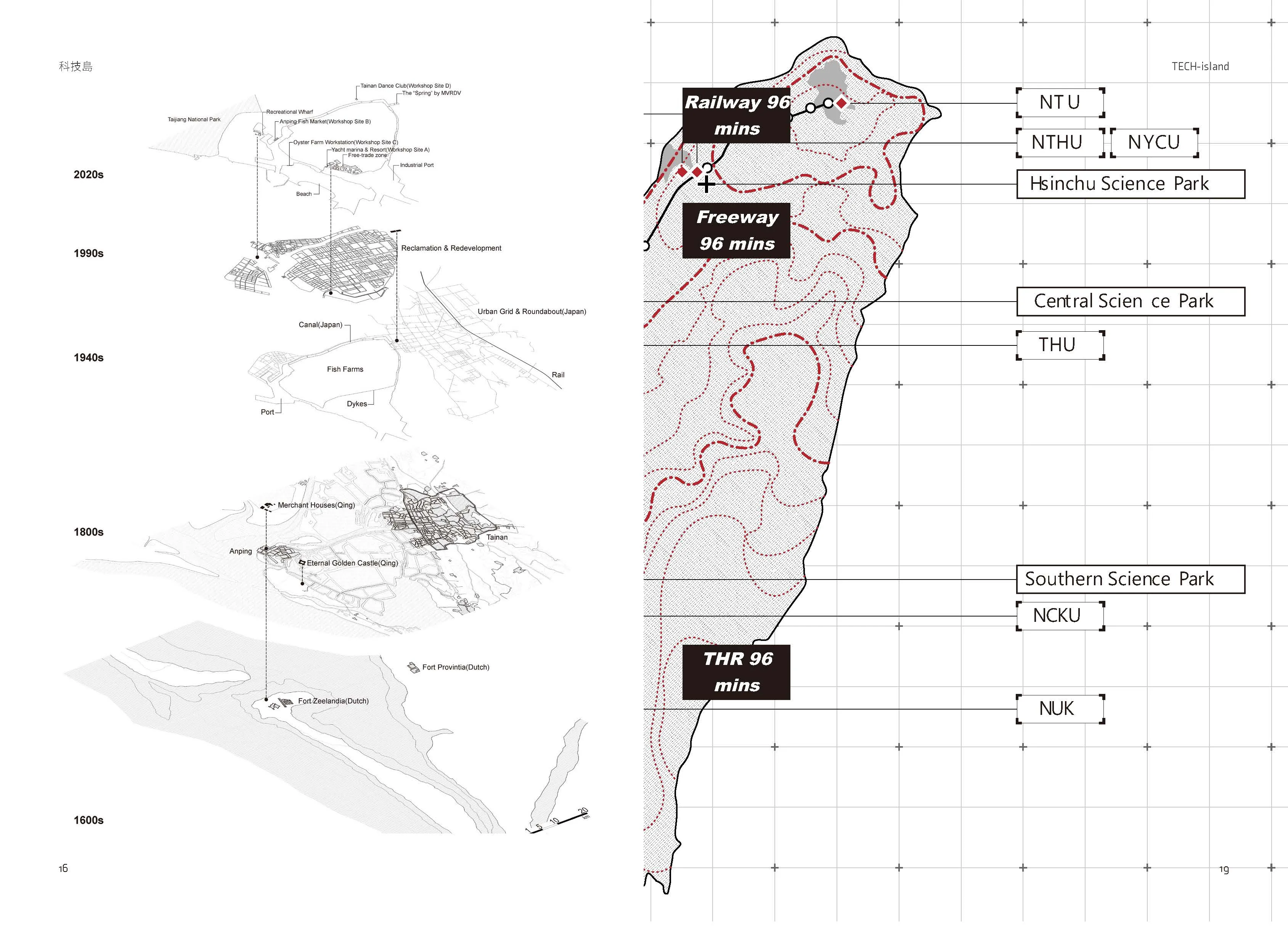
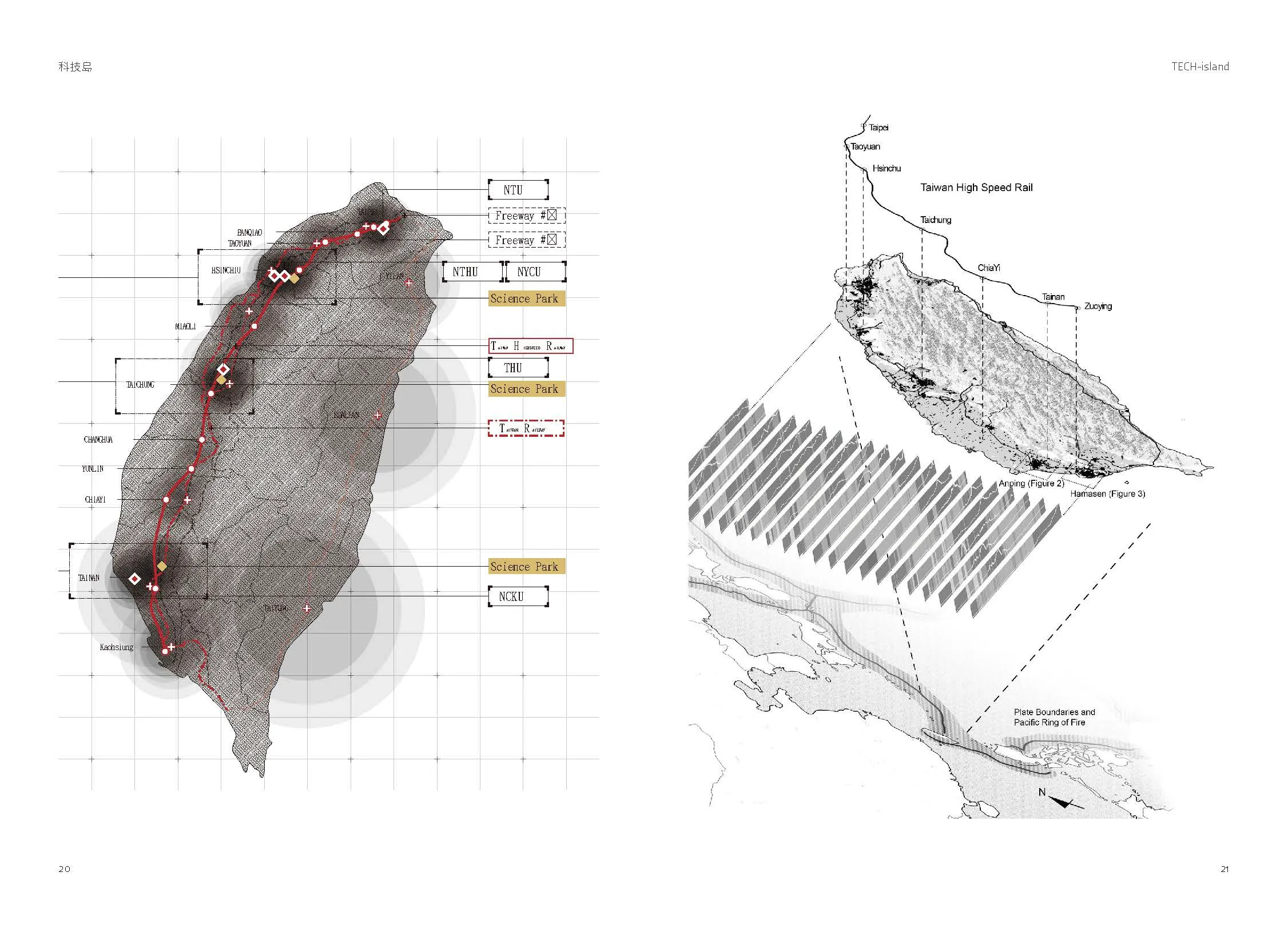
NON-Belief in chips
Technology explores the belief in two extreme myths: Taiwan as a “technology island” versus an “ecological island,” focusing on the costs hidden beneath green energy, particularly in Tainan’s Qigu.
Taiwan plays a pivotal role in global technological development, with its semiconductor industry supporting advancements in AI and high-tech innovation. However, this pride and confidence are accompanied by challenges such as energy demands, transitions, and Taiwan’s precarious geopolitical position.
As Taiwan shifts from traditional power systems to green energy, does this truly achieve ecological sustainability? While carbon-neutral data may meet electricity demands, the environmental reality often contradicts this ideal. Balancing the myths of a “technology island” and an “ecological island”raises pressing questions. The pursuit of high profits comes at a collective cost: limited water and energy, wetlands covered by solar farms, displaced fishponds, and irreversible ecological impacts.
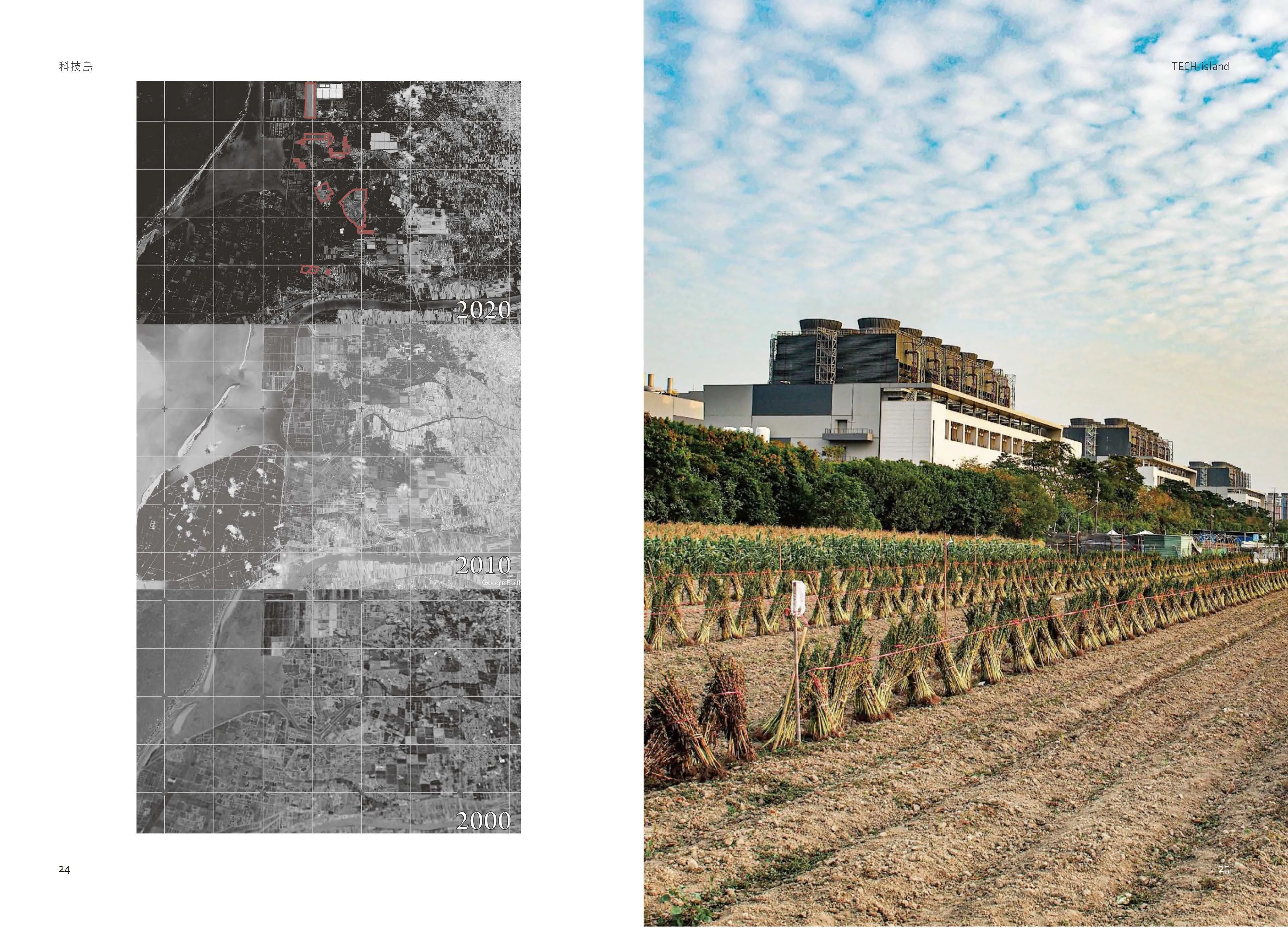

NON-Belief in sensory-motor
Control examines the intricate sensory-motor relationships in everyday life, reevaluating the conflicts among ecology, culture, and society within extended spatial frameworks and relational fields.
In an era dominated by short-form videos, overly simplified media has disconnected people from their physical connection to urban and architectural spaces, diminishing the ability to sense and engage with everyday environments. Against this backdrop, cities and architecture are understood as complex systems of interactions between the body and the environment, built upon sensory-motor dynamics. Architectural and urban design can shift focus from merely creating objects to enriching the relational field of “body-sense-motion.”
Design practices now address these subtle,embodied relationships, responding to ecological,cultural, and social issues within an adaptive cycle of ecological balance. Architects, urban designers,stakeholders, and activists are integral parts of this system, intertwined with natural ecosystems and shaping urban and architectural evolution amidst dynamic community succession.
Simultaneously, our bodies construct perceptions,emotions, impulses, and connections within these spaces. Body memory and sensory interaction coexist with the transformation of urban spaces. By consciously engaging body memory and sensory actions, we can connect personal and collective experiences, fostering interactions that create new realities.
Through the lens of third-party media, can we rediscover and reinterpret familiar urban landscapes?By integrating bodily dynamics with innovative imagery, viewers can transition from passive visual recipients to sensory participants. This reconstructed visual experience invites us to transcend superficial stimuli, delve into richer sensory layers, and rethink our daily lives and environments.
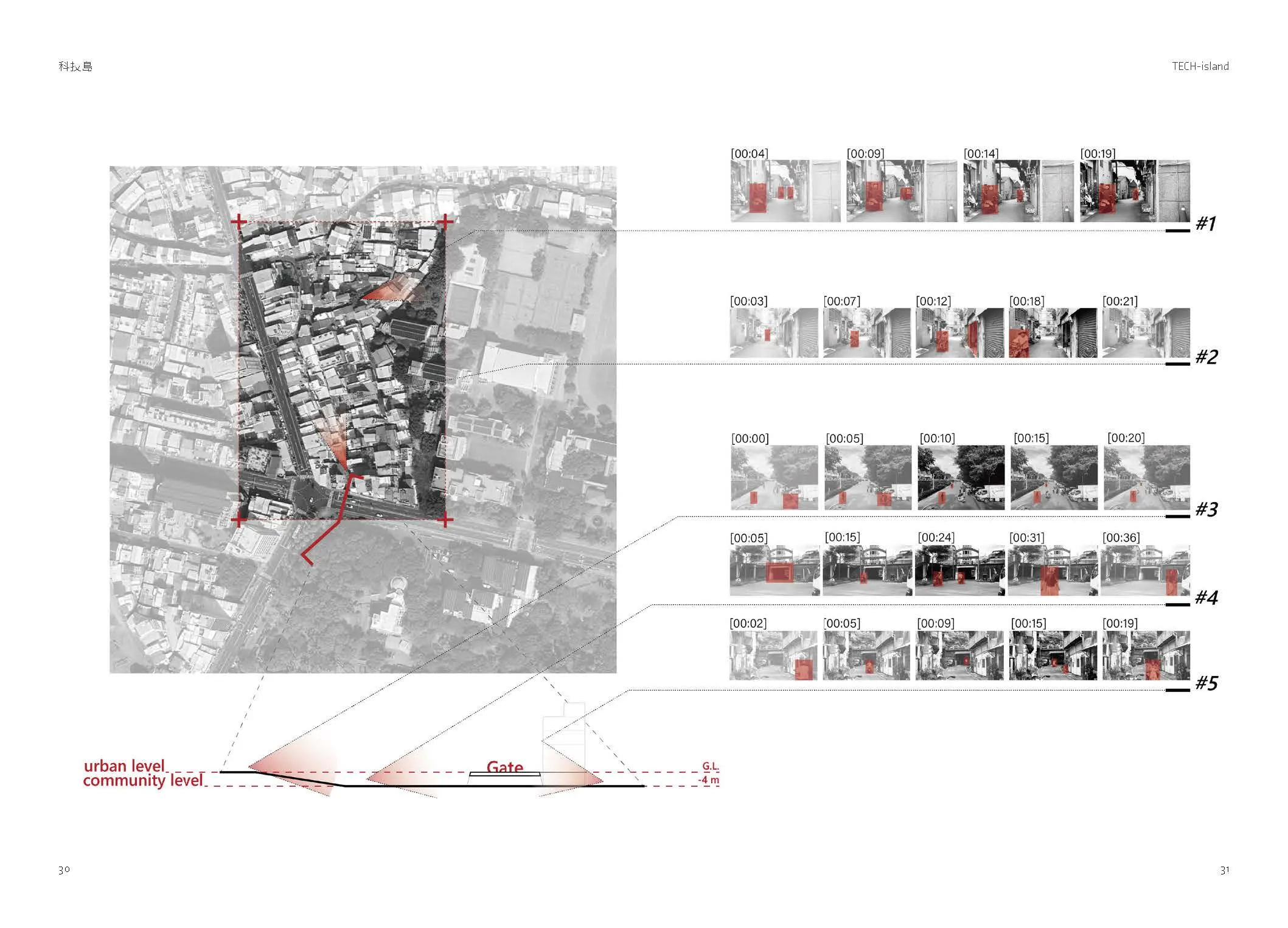
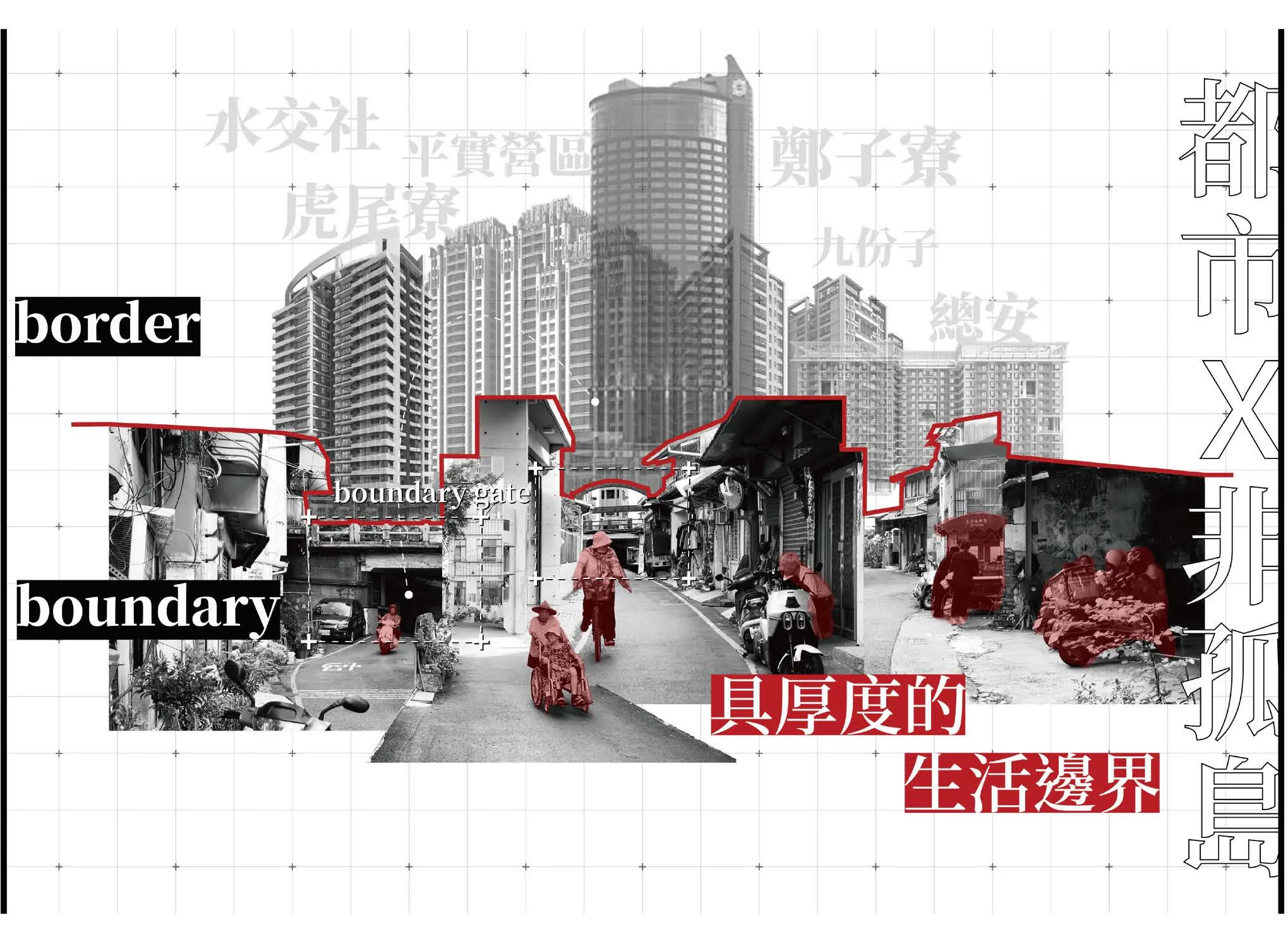

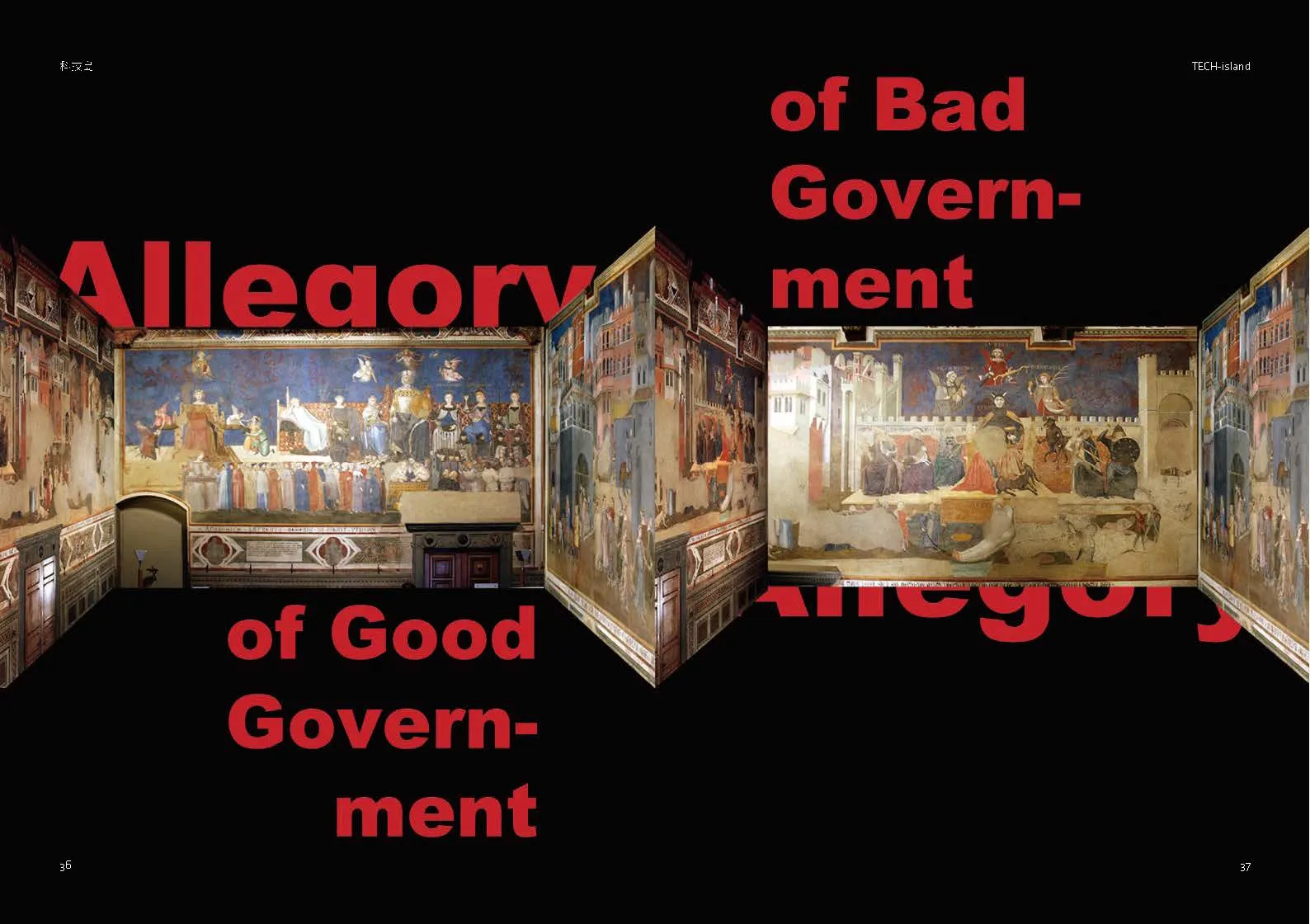
Embodied Intelligens among islands, archipelagos, peninsulas
The exhibition design emphasizes the concept of “islands.” At the center of the exhibition space, an island quietly stands, as if emerging from a dark ocean. This island is formed by the terrain profiles of Taiwan, meticulously cut from honeycomb paperboard. The intricate patterns embody the traces of time etched onto the land. A luminous glow seeps through the grooves of texture,meandering like a stream of memories gently tracing the contours of the terrain, whispering stories hidden.
Within the exhibition, the first window facing the canal has been left open, allowing natural light to enter. Through this window, visitors can catch a view of the Basilica di Santa Maria della Salute Church. The tender light outlines the church and reflects the rich culture of Venice, serving as a silent invitation, guiding visitors on a journey to explore the intersections of faith, technology, and the land of Taiwan.
The island, pieced together through Taiwan’s terrain sections, is integrated with e-paper technology to illustrate the impact of semiconductor development on Taiwan’s landscape. At the same time, it introduces discussions on environmental justice,including urban heat islands, energy distribution,the geopolitical threat, and other pressing topics.These discussions comprehensively explore the complex interactions between technology and the environment, presenting Taiwan as a critical site for such precarity.

Surrounding the island, projects are arranged in an archipelago, each addressing specific topics.While the islands seem independent, they are subtly interconnected, forming a cohesive narrative. Their content focuses on beliefs in “technology,” “efficiency,” and “control.” These themes delve deeply into the complex relationships between societies, environment, and architecture,encouraging visitors to reassess Taiwan’s shifting landscapes within this archipelago structure.
The exhibition’s archipelago pathway begins with a window that frames European beliefs. Following this pathway, the exhibition gradually unfolds the island narrative, showcasing twelve research models that examine Taiwan’s real-world scenarios and challenges. At the center of the archipelago lies a “faith peninsula.” A “votive lamps wall,“an Taiwanese symbol for fortune, stands as the centerpiece, serving as the core of faith. It connects all the display projects, creating a visual and experiential sense of unity and connection.
The exhibition also features several island sofas, inviting visitors to sit and rest while experiencing the intelligence of Taiwan’s islands. The design and materials of the sofas echo the theme of the exhibition, enhancing the immersive and comfortable experience. Above the exhibition space, the “technology island” presents a shifting display of Taiwan’s landscapes through e-paper,accompanied by 17 research booklets. These elements guide visitors along the “NON-Belief”pathway, setting the stage for exploration.
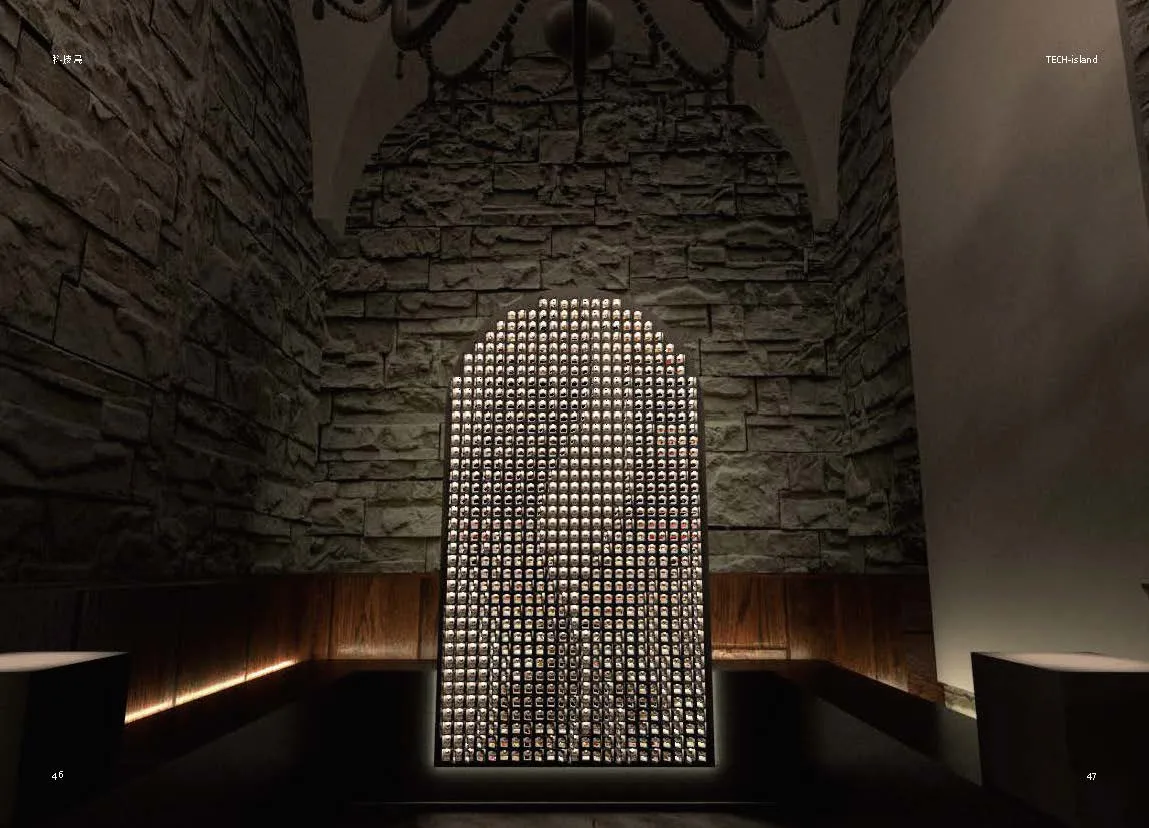
Section of TECH-island
Taiwan’s semiconductor industry spans 10,000 years, from Neolithic relics in the Southern Taiwan Science Park to today’s 2-nanometer chip production—a leap in precision by a factor of one billion. High-speed rail, power grids, and transport networks enhance manufacturing efficiency,making Taiwan a cornerstone of the global semiconductor supply chain.
However, challenges like seismic risks, energy consumption, and water shortages persist. Companies like TSMC pursue sustainability through earthquakeresistant design, carbon capture, and green manufacturing. Beyond driving economic growth,Taiwan’s tech industry plays a vital geopolitical role,securing its irreplaceable global position.
The “Technology Island” cross-section showcases Taiwan’s diversity—from its semiconductor prowess to its complex terrain, seismic activity,and cultural heritage—underscoring the Taiwan Pavilion’s significance at the Venice Biennale.
TECH-island
Centering on the concept of “Island,” explores Taiwan’s challenges and intelligences in the face of globalization, technology, and environmental change, highlighting the tension between “Belief” and “NON-Belief.”
